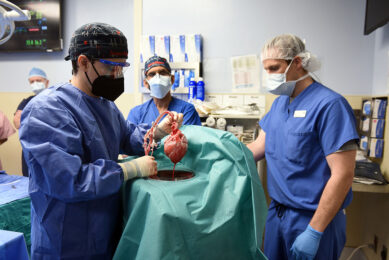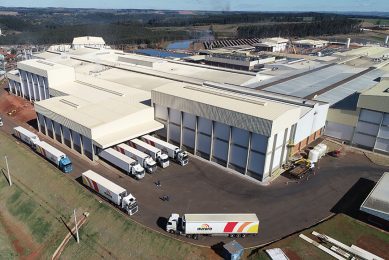Controlling high levels of PRDC mortality with PCV2 vaccines
On a recent visit to Korea, where the average number of pigs finished/sow/year is about 13 and the mortality is caused primarily by the porcine respiratory disease complex (PRDC), I was asked if the new PCV2 vaccines would solve the problem?
On a recent visit to Korea, where the average number of pigs finished/sow/year is about 13 and the mortality is caused primarily by the porcine respiratory disease complex (PRDC), I was asked if the new PCV2 vaccines would solve the problem?
The new PCV2 piglet vaccines, one of which has just been introduced into Korea (Ingelvac Circoflex® – Boehringer Ingelheim), offer exciting prospects for controlling infections that are caused by PCV2 and reducing mortality certainly but they cannot be expected to solve all the problems that cause mortality in PRDC.
Chronically affected
Mortality associated with PCV2 infections in chronically affected herds are between 0-10%. If you are producing only 13 pigs/sow/year, there is a mortality problem of approximately 35%, if we use 20 pigs/sow/year as a basic standard. There is more than just a PCV2 battle going on, although its damage to the immune system will be compounding any other infection that is present.
One needs to determine what is going on in the farm. For years in Asia, there was limited diagnostic activity, so one used to depend on clinical inspection and monitoring of diarrhoea, coughing, mortality and other clinical signs to see what was happening and where. This usually was rounded off with a session of post-mortem examinations to determine the more likely causes.
Diagnostics have changed dramatically over the years and some companies are offering full diagnostic cross-sectional serological profiles that you could match up with your clinical inspection. This really is the way forward to determine precisely what is going on in the farm, and then you can start to address the issues that are causing your production and mortality problems.
UK
In the UK, when the post-weaning multisystemic wasting syndrome (PMWS) epidemic took off, there was a surprising fall in cases of E. coli infection (see Figure 1). This was associated with the adoption of the Madec principles to reduce stress at weaning and an increase of the weaning age to approximately four weeks.
This has had a dramatic improvement on post-weaning survival and piglet stress reduction and they are usually over the effects of weaning in five to seven days rather than the normal growth check for 10-14 days. With care in the nursery stage (four to ten weeks of age) and the use of ‘all-in all-out’ systems mortality can be brought down to almost 1%. Post-weaning diets usually contain zinc oxide and an antibiotic to counter bacterial infections.
Figure 1. Reported incidents of PMWS, E. coli, PRRSV, EP and A. pleuropneumoniae in the UK (VIDA, 2006).
 |
Number of infections
PRDC is comprised of a number of infections involving viruses, especially PRRSV, swine influenza virus etc, Mycoplasma hyopneumoniae, the cause of enzootic pneumonia (EP) and bacteria.
Haemophilus parasuis and Streptococcus suis tend to hit the younger pig but can be brought on with a concurrent PRRSV infection. Pasteurella multocida usually follows a mycoplasma infection and Actinobacillus pleuropneumoniae usually hits the late grower or early finisher pig when maternally derived antibodies subside at about ten weeks.
It can cause a severe mortality problem on it is own but when mixed with the viruses such as PCV2 and PRRSV and mycoplasma, can cause the severe mortality problems, which are reported in Korea.
Beneficial effect
PCV2 piglet vaccines will neutralise the PCV2 component. Mycoplasmavaccines can have a very beneficial effect. In our UK Pig Health Scheme, which looks at herds lungs at slaughter, the national average lung lesion score is down to 2.5-3%, which is incredibly low but there are about 70% of pigs vaccinated against EP.
About 85% use single shot vaccines, so they do work. Already some companies are talking about combined use of the PCV2 and EP vaccines, to avoid handling stress, as they use the same adjuvant.
PRRSV vaccination raises more of a problem due to the drifting of new genotypes away from the original vaccine strains and there is a variable vaccine protective effect. There are effective A. pleuropneumoniae vaccines available but the uptake is relatively low, and hence there is a reliance on antibiotics. These must be used carefully and antimicrobial sensitivity should be checked regularly.
There are opportunities to reduce high mortality in production systems but it is usually a combination approach of improving diagnostics, introducing new management systems, utilising vaccines and strategic medication, which will prove successful.











